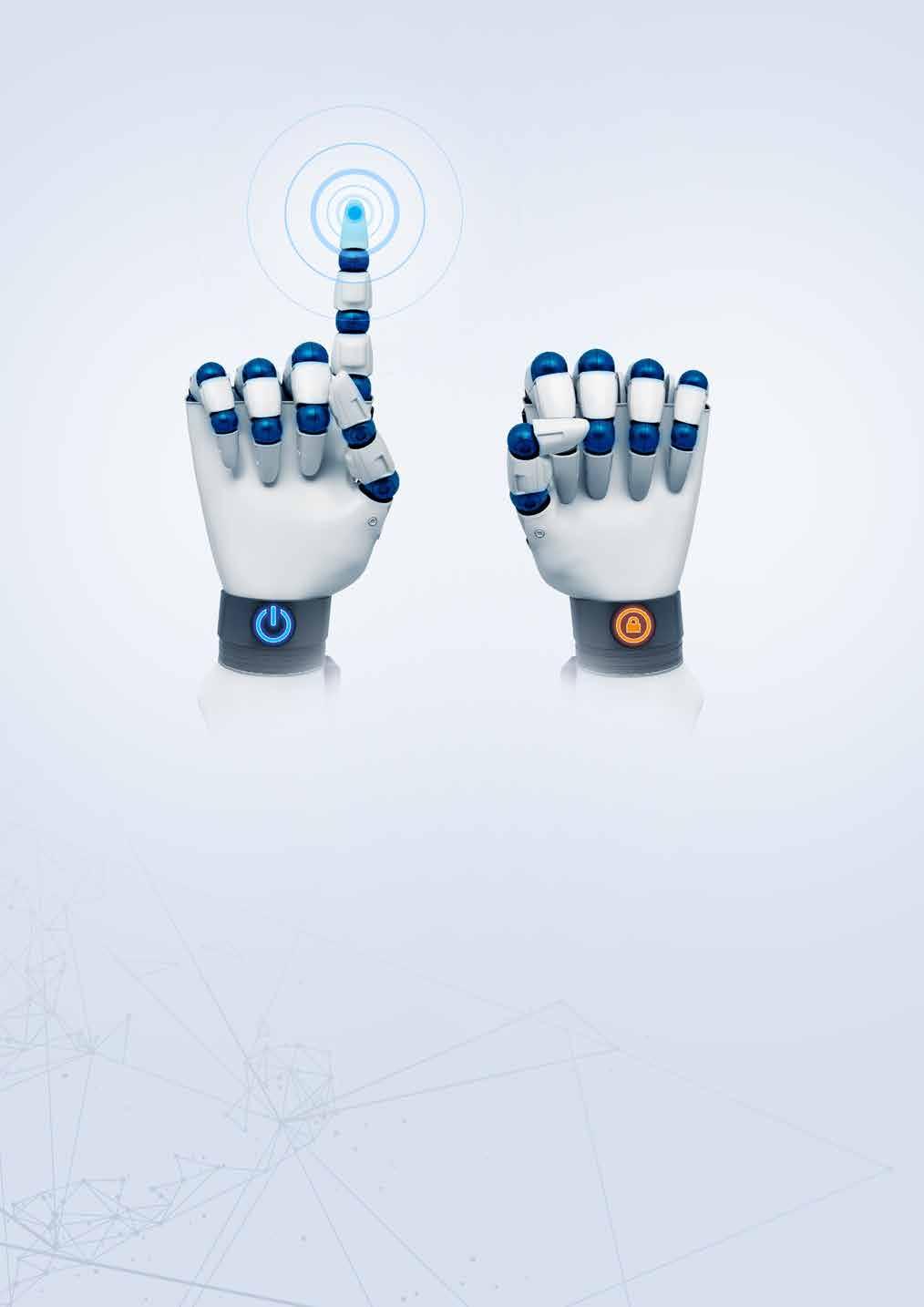
6 minute read
THE DIGITAL FUTURE OF HEALTHCARE
DIGITAL TECHNOLOGY IS SHAPING THE FUTURE OF HEALTHCARE, HELPING PROVIDERS TO DELIVER MORE PERSONALISED AND EFFICIENT PATIENT CARE.
For years, the healthcare industry has been a laggard when it comes to the adoption of digital technologies. However, the pandemic has accelerated the pace of digital transformation in healthcare, leading to greater efficiency and responsiveness. The move to digital care delivery has bridged the gap between patients and doctors, resulting in reduced costs and improved operational efficiency.
Advertisement
According to research by Aruba, a HPE company, as of last year the healthcare sector was among the furthest ahead in terms of its adoption of advanced technologies and the sense of urgency it felt around this. Around three-quarters of healthcare IT leaders had started to implement trials or applications in areas such as artificial intelligence (AI) (74%), Internet of Things (IoT) (76%) and machine learning (71%).
“While there are several drivers for digital transformation in healthcare, the most important one is access to reliable, quality data – which is essential for improving outcomes, quality of care and services to patients,” says Jad Bitar, Managing Director & Partner, Boston Consulting
Group. “Moreover, increasing costs, a global shortage of expert caregivers, and the ability to provide further highquality services with a limited budget are additional drivers accelerating digital transformation in healthcare. It’s also important to note that the COVID-19 crisis has sped up this adoption. Although patients and caregivers have been restricted in terms of movement, they have still received care and carried out their responsibilities, respectively, due to sustained transformation progress.”
Kassem Darwish, Solutions Architect, CME, says, however, the transformation was a widespread aspiration even before recent events transpired due to several factors that have remained relevant throughout the crisis. Firstly, rising consumer expectations are a key driver. With the power of digital becoming more and more apparent, demands are increasing for services that are seamless and offer greater convenience and transparency.
“Secondly, there are intense cost and competitive pressures. Healthcare providers and payers are required to lower expenditures, including preventing foreseeable illness and streamline their operations to reduce inefficiencies and waste while providing customised services that align with the highest standards. Finally, profound regulatory changes and compliance challenges are also taking place across the industry. Collectively, these areas must be addressed, and digital capabilities can ensure success is met in each of these areas,” he adds.
Many digital technologies are shaping the future of healthcare, enabling better patient outcomes. These include AI, ML, blockchain, mobile apps, wearables, and many other advancements.
“IoT is already making a significant impact, enabling healthcare professionals to make assessments through smart devices, identify the best treatment courses, proactively connect with customers, and prevent several types of illness and diseases. Then there’s machine learning, which is streamlining administrative and operational processes in healthcare providers and payers, personalising medical treatments as well as insurance plans. There are many use cases concerning these technologies, and we will see more and more emerge over the coming years,” says Darwish from CME.
Bitar says data-driven healthcare will lead to a significant care model transformation. “This includes the rapid adoption of Artificial Intelligence-based self-care, with such applications able to provide accurate diagnostics and recommend short-term treatment courses for select cases by analysing patient data. The emergence of self-care will be one of the most significant disruptors of the industry. Beyond data and AI, telehealth will also have a huge impact, allowing experts to provide services to patients anywhere, anytime,” he says.
Changes in how medical care is provided in the wake of Covid-19 has made the healthcare industry a prime target for cybercriminals. In 2020, the sector bore the brunt of ransomware, malware, and phishing attacks, and many healthcare providers in the region are woefully unprepared to deal with these cybersecurity challenges.
Giuseppe Brizio, CISO EMEA, Qualys, says the healthcare industry is being targeted, now more than ever, by bad actors as the covid pandemic has made it increasingly vulnerable. Ransomware in the healthcare industry has grown more than 45% over the past 12 months, causing major disruption in healthcare

Jad Bitar

Kassem Darwish

Giuseppe Brizio

Chris Morales
RANSOMWARE IN THE HEALTHCARE INDUSTRY HAS GROWN MORE THAN 45% OVER THE PAST 12 MONTHS, CAUSING MAJOR DISRUPTION IN HEALTHCARE SERVICES AND COMPROMISING UTILISATION OF MEDICAL EQUIPMENT AND INTENSIVE CARE INFRASTRUCTURES.

services and compromising utilisation of medical equipment and intensive care infrastructures.
“Data breaches on personal health and medical records have also grown with the increased adoption of telemedicine. Most cyberattacks start by targeting an individual as the human factor is the weak spot. Therefore, regular security awareness training should take place to educate users on how to recognise cyberattacks, including phishing and social engineering simulation campaigns,” he says.
Chris Morales, head of security analytics, Vectra, says the real threat is already in healthcare networks in the form of privileged access misuse, and the growth is healthcare IoT devices is overwhelming and dangerous. “By default, a lot of people have access to patient medical records. This makes it very easy, and perhaps a bit enticing, for some to take advantage of the situation. Internal actors are largely responsible for healthcare data loss. I’m talking about employees who access patient data out of curiosity or commit identity fraud. Apparently, it is the only industry where this occurs at such an alarming rate. While everyone else worries about cyberattacks from someone they’ve never met, security professionals in healthcare worry most about the people they talk to in the break room.”
How can the healthcare industry fight cybercrime and improve its security posture?
“There are a number of security best practices that should be implemented or maintained to protect patient data. As a first step, all employees should undergo security awareness training. This will enable them to better identify and manage phishing emails that often act as cybercriminals’ initial point of entry. Secondly, it is critical that these organisations have visibility into their network and invest in threat detection solutions to minimise the time it takes to respond to a threat. Next, security resilience should be made a priority. That is, legacy systems should be updated where possible, and software patches swiftly applied. Tabletop exercises should be regularly held as well to prepare for the worst. If in doubt, organisations should partner with experts in security for advice and support, should an issue arise,” says Israel Barak, CISO, Cybereason.
Bitar from BCG sums up: “A critical aspect of security and safety in healthcare will be the protection of patient data. Although many such standards already exist, the most essential mechanism – in my opinion – will be to enable patients to own and govern their own data, with access to data requiring their consent and knowledge. To complement this, awareness campaigns will be required to ensure caregivers understand the importance of the issue, while policies will also have to be adopted so all healthcare players follow suit. Finally, regulators will play an important role in putting together the legal framework to enable this.”











